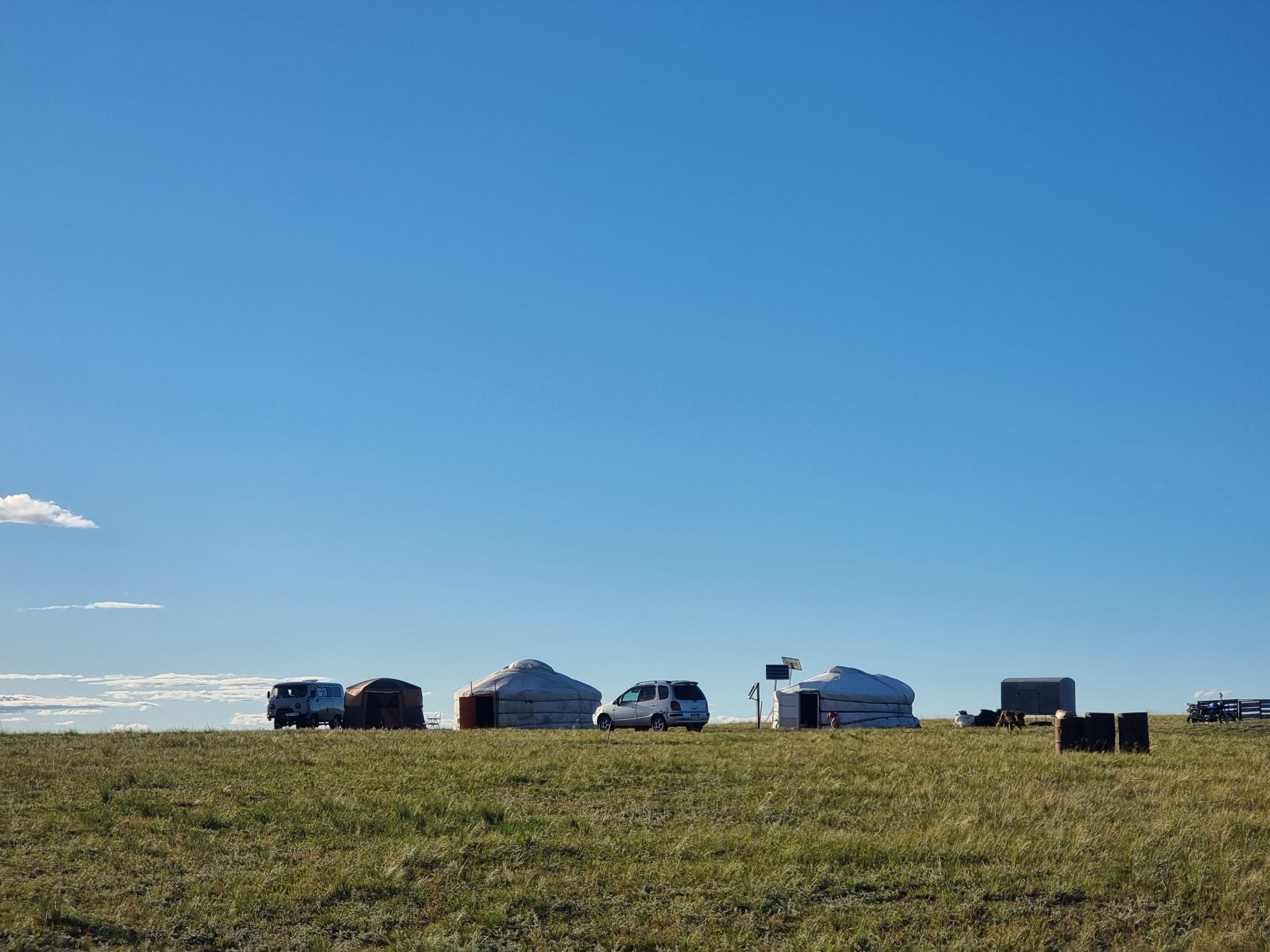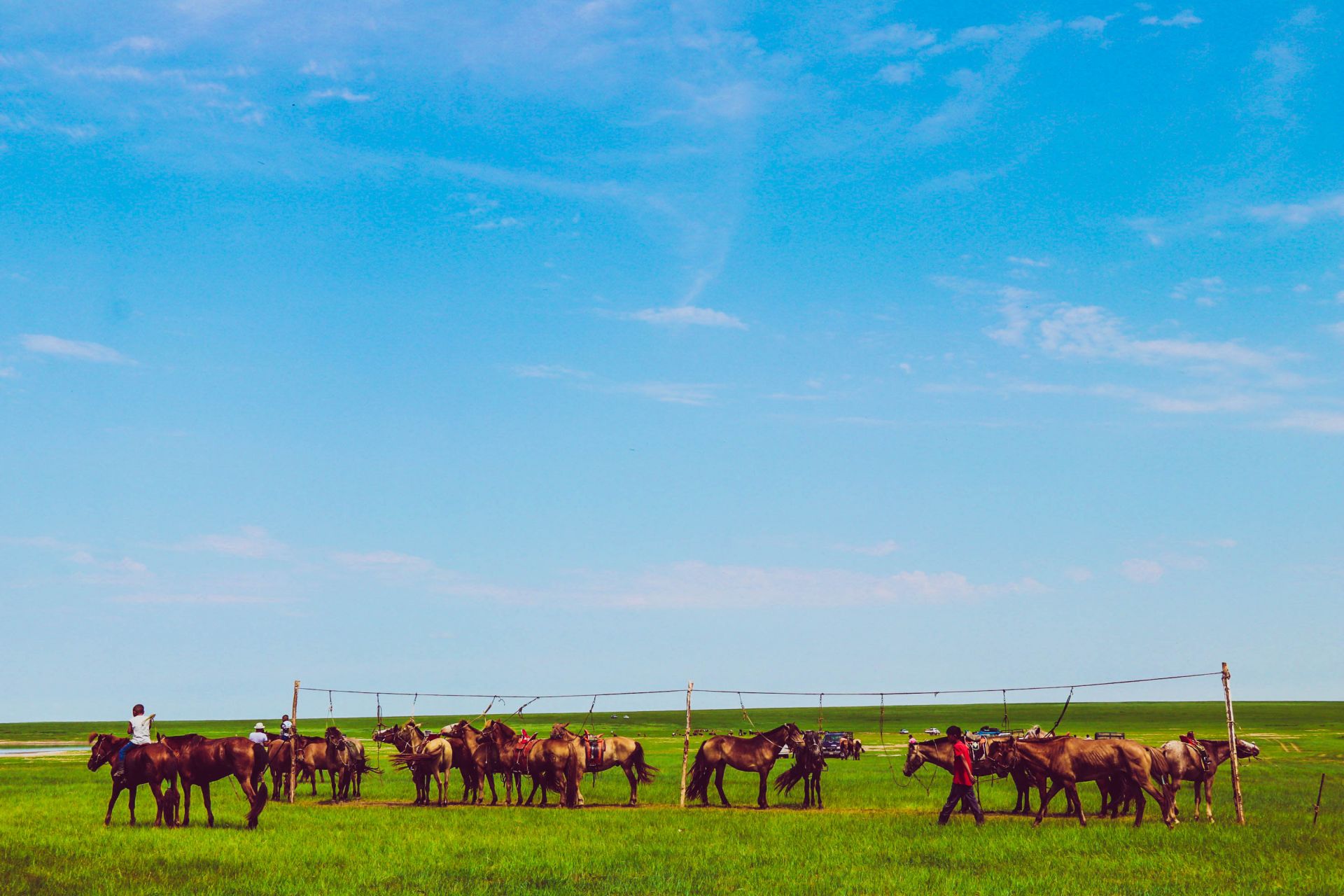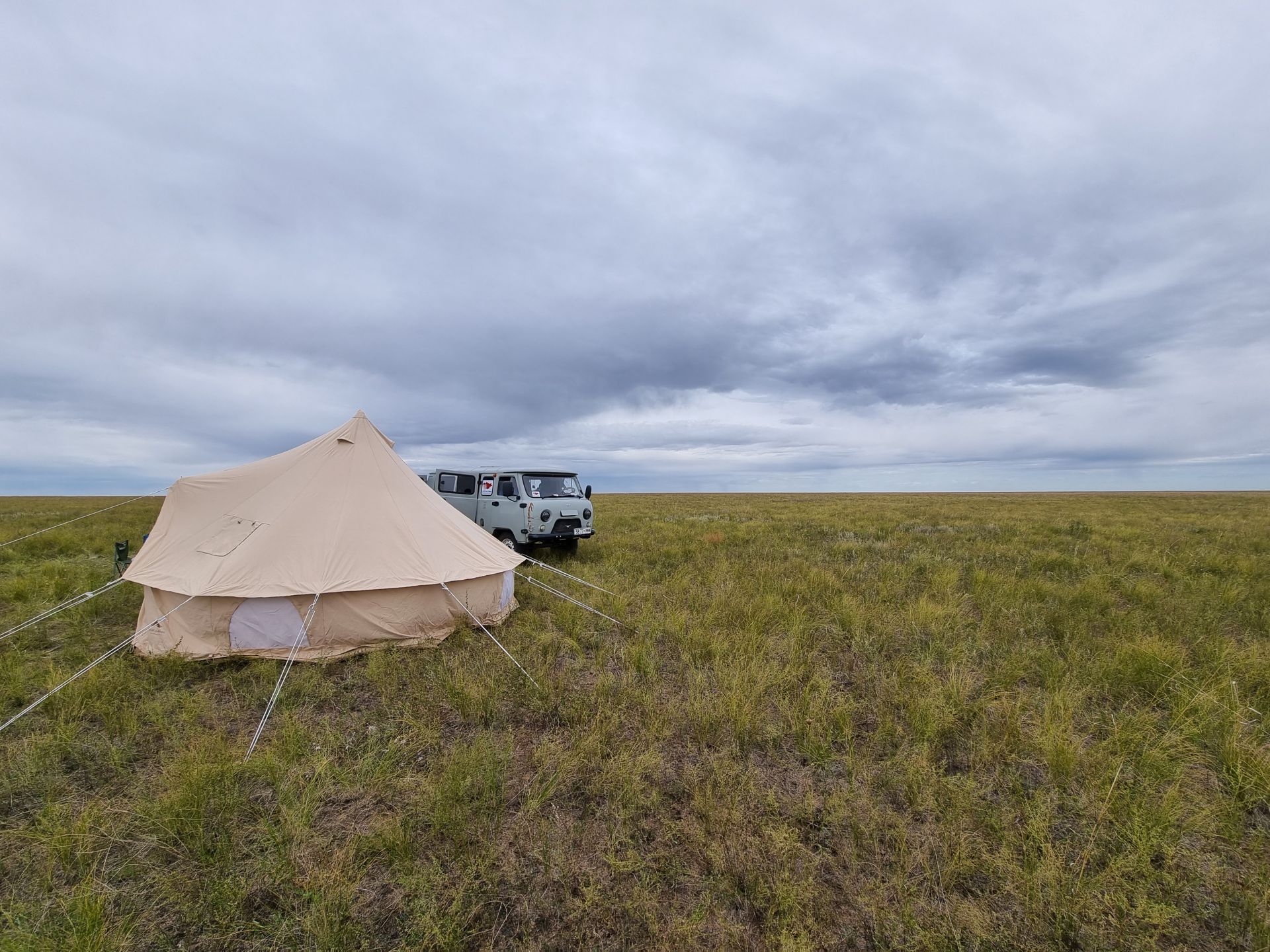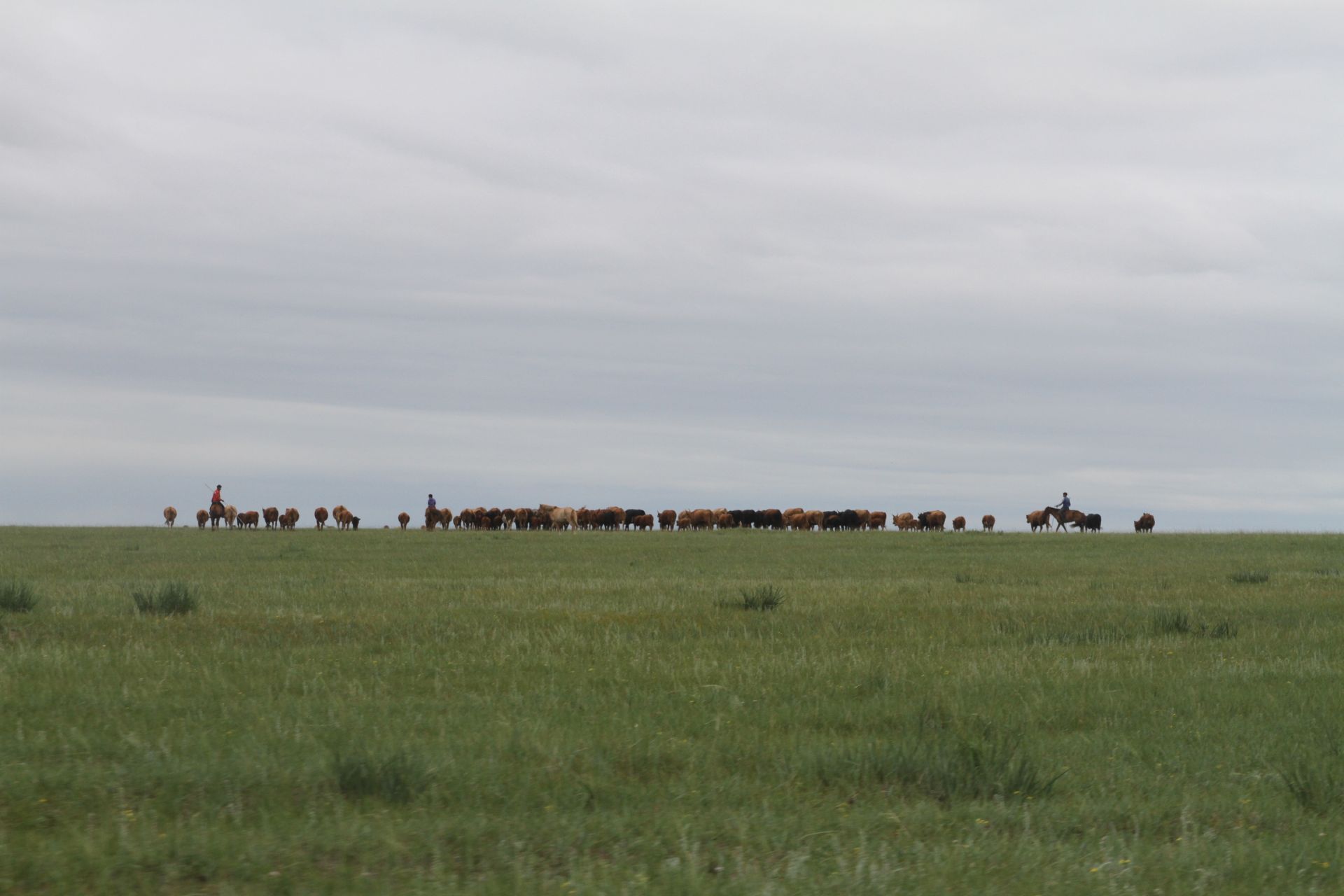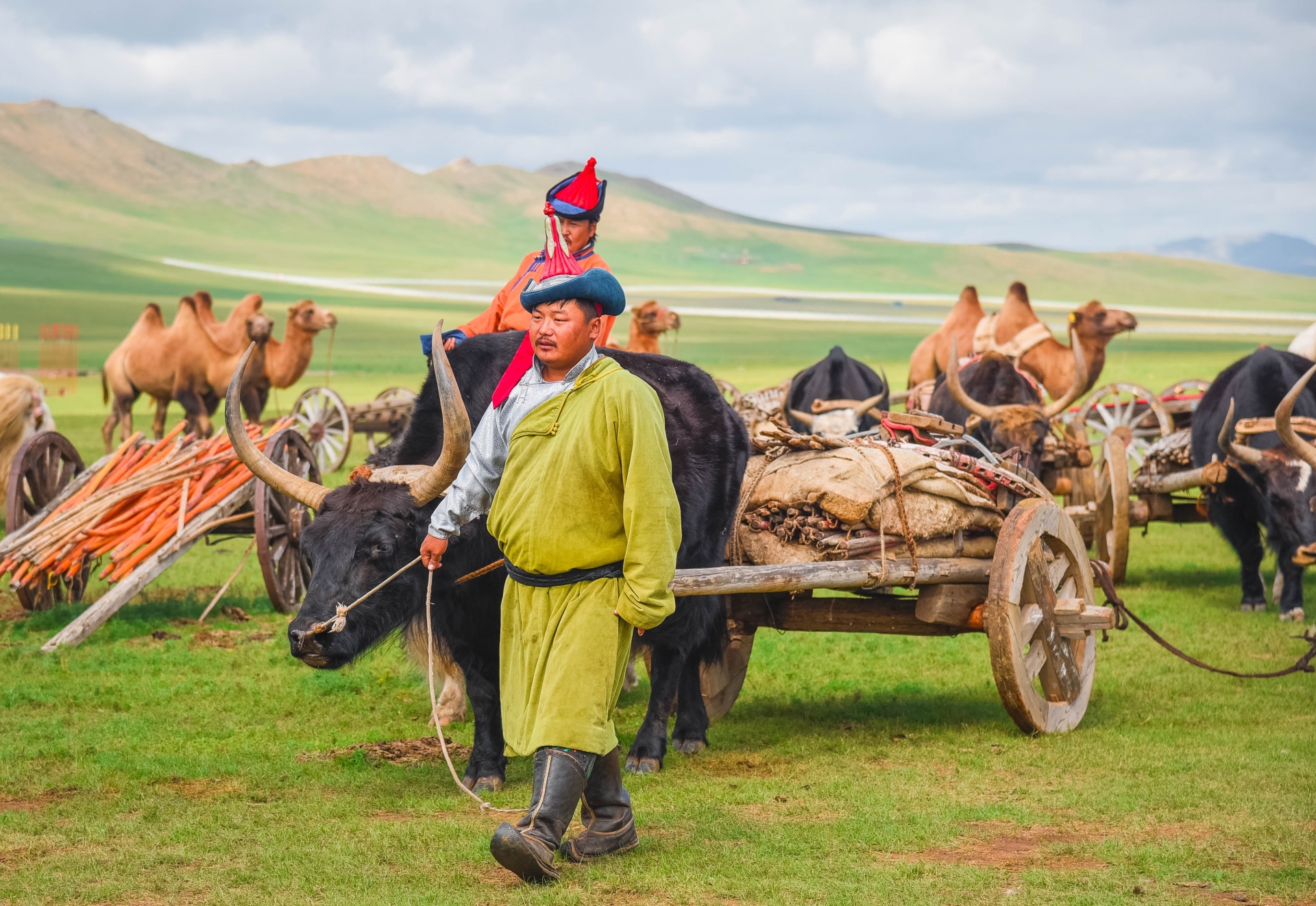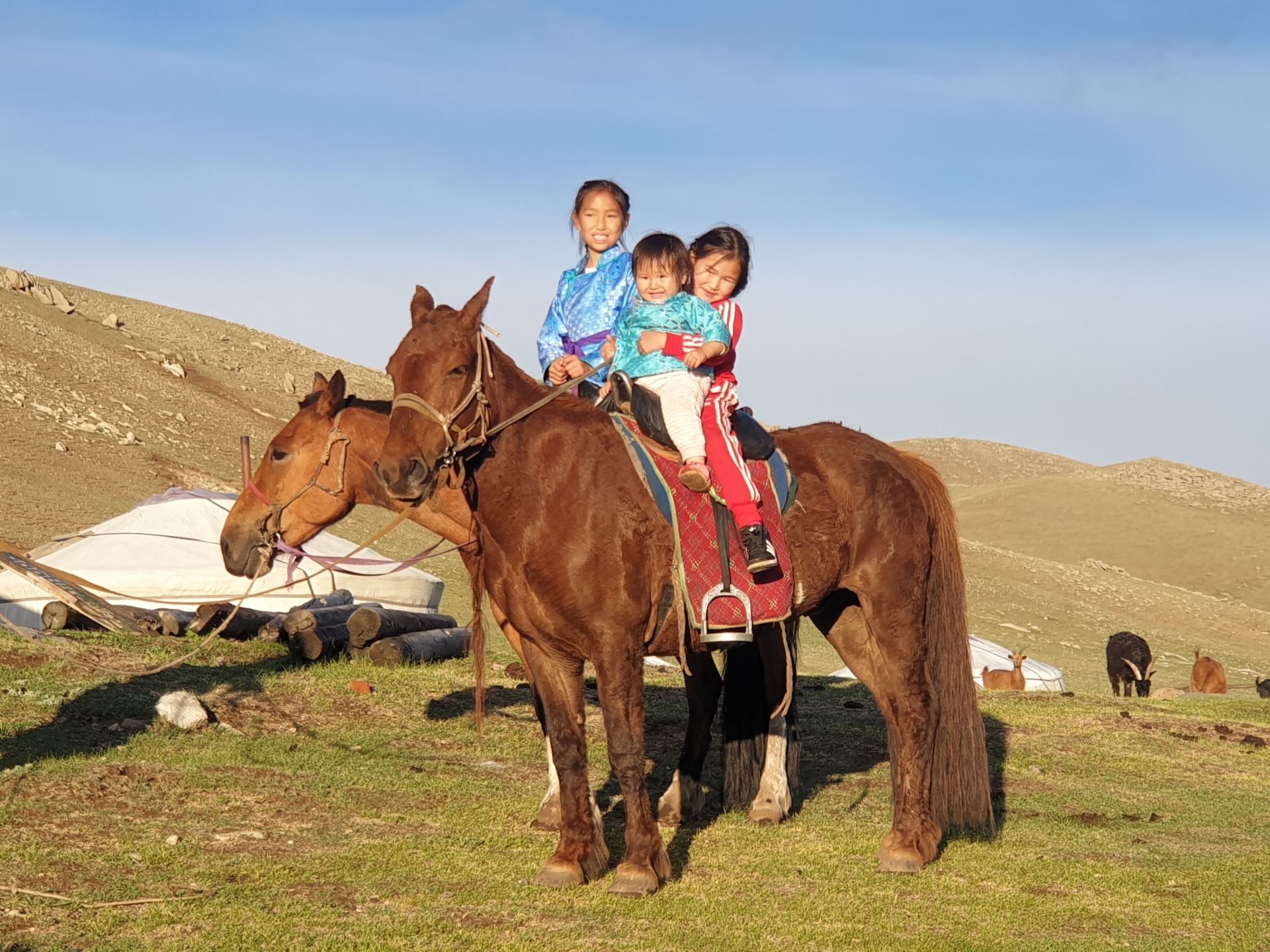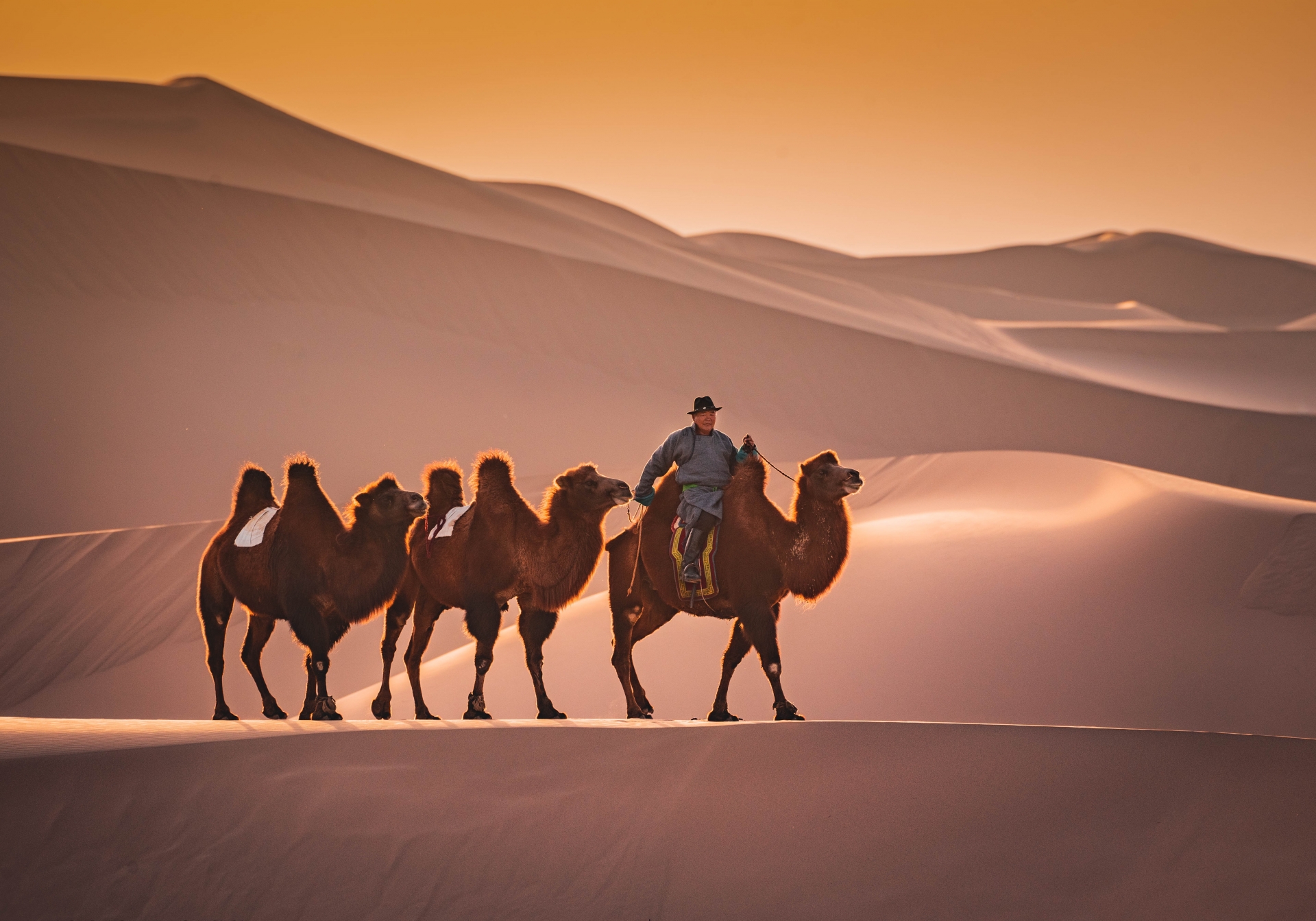Travel with us
To the World's Largest Steppe
Highlight
Largest horseman statue in the world of Chinggis Khan
26.5 m high statue of Bodhisattva representing compassion
Discover Mongolian culture, tradition and the nomadic lifestyle
Horse riding
The endlessly flat steppe
Chinggis Khan's birthplace
Buir Lake
Experience and learn with the nomadic family
Overnight stays in typical Mongolian ger
Numrug National Park
Mongolian folklore concert
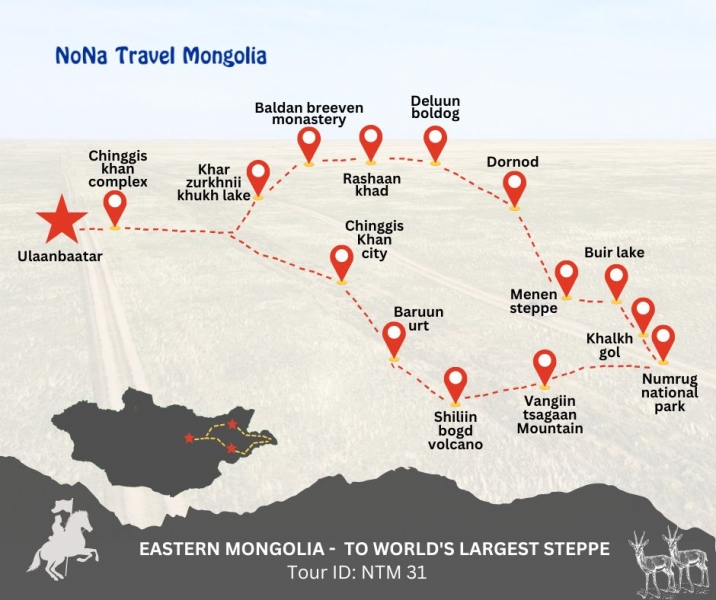
Itinerary
Arrive early in the morning at Chinggis Khan Airport. Our guide will pick you up with the sign "NoNa Travel Mongolia" and transfer to the hotel (approx. 60 km). Refresh yourself and get some rest. Then we can start sightseeing with the famous Gandan Monastery. Then we can start sightseeing with the famous Gandan Monastery. The monastery was founded in 1727 and was badly damaged in 1937 during the Stalinist terror in Mongolia, and several buildings were even destroyed. The complex remained closed until 1944, only then was there a conditional re-use of the temples that had been preserved. Until the end of the Mongolian People's Republic, the Gandan Monastery was the only monastery in all of Mongolia in which religious ceremonies - under the control of the secret police - were allowed to take place. But today it has become a peaceful and beloved place for Mongolians. It will always be something special.
After enjoying the first Mongolian meal, visit the newly built Chinggis Khan Museum with rich treasures and go to Sukhbaatar Square, which played a major role in the 1921 People's Revolution. The Government Palace and the statue of Genghis Khan can also be visited here. We are right in the center of the capital city. After walking, we will visit a Mongolian folk art performance with wonderful performances such as throat singing, traditional long song, and contortion. Welcome dinner.
Departure from Ulaanbaatar. We drive east on an asphalt road. We pass the newly established Chinggis Khan equestrian monument, the largest equestrian statue in the world.
Continue to Khar Zurkhnii Khukh Nuur. It translates as "Blue Lake of the Black Heart". Khar Zurh is the pointed peak on the northern side of the lake. This lake is a very important place in Mongolian history, especially of Chinggis Khan. At this place, Temuujin was enthroned as the king of the united tribes of Mongolia and was named "Chinggis Khan" in 1189, which means Oceanic Great King.
The surroundings of Khukh Nuur are quiet, peaceful and wonderful for hiking and relaxing.
The area around the lake is a place of natural beauty, surrounded by a mountain and rich in various animal and plant species. On one shore of the lake is a monument dedicated to the 840th anniversary of the birth of Chinggis Khan, and wooden artworks of 36 royal or golden lineage kings have been placed in a crescent-shaped area with a diameter of 108 metres around the monument.
We drive to Kangal Lake, where we meet up with our horse man. We ride to Baldan Bereeven Monastery with its fascinating landscape. It was founded in 1654 and grew to become the second largest Buddhist monastery in Mongolia in 1776 and is home to more than 5000 monks (8000 in some documents). The monastery and temple complex was destroyed by the communist regime in 1937 and was forbidden to visit for over 60 years and almost forgotten. Now it has been largely restored, about 10 monks chanted and practised Buddhism there and gradually became popular again.
Today we ride on to the Uglugch Wall, which dates from the 10th to 12th centuries. We continue to the Raschaan Rocks, where deer stones, inscriptions and rock paintings from different eras can be seen
Drive through the varied mountain landscape to Binder-sum. Binder-sum stretches along the Onon River in the eastern foothills of the Khentii Mountains. The Binder sum center is located just north of the confluence of the Khurkh River and the Onon. The surrounding area is characterized by forest steppe and gentle river valleys.
The drive to Genghis Khan's birthplace, Dadal Sum. Let's discover the birthplace of Genghis Khan, Deluun Boldog and the glittering Chinggisiin Gurvan Lake (3 lakes).
Dadal is located in the Onon Valley, just south of the Onon-Balj National Park on the Russian-Mongolian border. Dadal and its surroundings form one of three Buryat soums in the north of the Khentii Aimag. The Buryats had already turned to a sedentary way of life before the Sovietization of Mongolia. They mostly live in small, self-built wooden houses and not in yurts. This makes the village very different from other Mongolian settlements.
In the adjacent Onon-Balj National Park, the two dominant ecosystems of Central Asia meet - the boreal coniferous forest and the vast steppes. This is the source of the enormous biodiversity that has earned the park its protected status.
Legend has it that he regularly washed himself in a nearby spring. A monument on the Deluun Boldog hill also claims to mark the exact birthplace of the great Khan.
Continue through the vastness of the Mongolian East in the direction of Tsagaan-Ovoo sum. If possible, we will visit a Buryat family today. We will experience a quiet and peaceful night with nothing to hear. Enjoy nature.
In the morning, we continue our journey through the steppe to our host family. There we are warmly welcomed and given an insight into the life of the nomads. Here we have the opportunity to taste homemade dairy products. Lunch, dinner and overnight stay with the family in a traditional yurt. The meals are simple, local dishes.
From day to day we will get to know the everyday life of nomads. Nowhere else in the world are there as many horses per inhabitant as in Mongolia. Nomads rarely walk, they ride their horses. Even small children learn to ride, sometimes even before they can walk. Mongolians are very good riders. Experience everyday life up close.
Continue to the city of Choibalsan of Dornod aimag, which was called our leader in the 1940s. It is the fourth largest city in the country. It is located on the Cherlen River at an altitude of 747 meters. Shopping for the rest of the journey.
Continue east through the endless steppe of Menengiin Valley. This steppe road is very flat and can even be described as a Mongolian steppe highway. Grasses grow relatively well here.
Menen steppe is 90 km long and over 60 km wide. This is the world's great steppe that has preserved its homeland, and there are many pastures, antelopes, wolves as well as rare animals.
You can see the beauty of the steppe where the perennial, nutritious and segmented grass sways in the Menen Steppe. You will feel what a sea of grass
After a delicious breakfast, we drive on to Lake Buir. It is a freshwater lake on the border between Mongolia and the People's Republic of China. It is located in the north of the easternmost tip of Mongolia and in the southwest of the New Right Bargu Banner of the Inner Mongolia Autonomous Region in the Buir Depression. The oval lake is 33 km long, 20 km wide, its surface area is 610 square kilometers, the average water depth about 8 m.
Today we spend the whole day at the lake
Drive to Ikh Burkhant Monument, it is a religious wonder in eastern Mongolia. Made of 1200 stone cattle carts, the 30-meter-tall Janraisig God of Salvation made of solid stone is one of three 30-meter-tall deities in the world. The other 2, one made of wood in India and another in Mongolia, made of 19 tons of gold-plated copper.
There is the Ikh Burkhant complex with the Buddha stone statue in Sumber Soum, Dornod Aimag. The monument was built in 1859-1864 on the initiative of Togtokhtur Bat-Ochir (known as "To" Prince), the prince of Khalkhiin Setsen Khan Aimag. The monument is the Ariyabal God who saves eight kinds of dangers. The Ariyabal God comprises eight symbols including lions, elephants, snake, fire, water, chains and human spirit. It is said that the great god was created to protect the eastern border of Mongolia from any danger. It is also said that To Prince observed that the wealth of Mongolia was sent abroad and then built the complex to keep the wealth of our ancestors in the motherland. The complex with the Buddha statue took seven years to build. The huge image of Janraisig, located on two acres of land and 12 feet or 90 meters high, faces the direction of the sunrise.
Continue to Khalkh Gol, which plays a very significant role in Mongolian history.
Hike - open air museum in battlefield of Khalkhiin Gol.
Today we drive into a beautiful national park. Nömrög National Park was completely closed for a long time because it was very difficult to reach.
to reach. Here the flora and fauna have been able to develop undisturbed by any external influences. We are very close to the Chinese border.
We enjoy nature and the solitude of the grasslands. We are sure to see gazelles and antelopes.
Continue towards Tuvshinshiree sum from Sukhbaatar province. Sukhbaatar is famous for racehorses in Mongolia. On the way, we will do some shopping in the town of Baruun Urt for the rest of the journey.
Onward journey to Ikh Nart Nature Reserve. Here the endless steppe ends abruptly and we experience a varied landscape with magnificent rock formations. Arrival at the site, which was only visited a few years ago. We drive to the place where we can camp.
We visit the nature reserve site and drive to several places. Also the opportunity to ride camels and visit nomad families. This park is home to ibex, black vultures and other wildlife.
After visiting Choiriin Bogd, we drive to the city of Ulaanbaatar. Hotel transfer to the hotel.
Pick up from the hotel and transfer to the airport. Thank you for the visit and getting to know the Mongolian culture.
INCLUSION
INCLUDED
- Std twin room at 4* hotel
- Shared accommodation at Gercamp for 2-4 people
- Private transports
- English or german speaking guide
- All meals as mentioned
- All entrance fee
- Horse ride as mentioned
- Sleeping tents and general camping equipment
NOT INCLUDED
- Personal Expenses
- Optional Activities
- Camera fee
- Travel insurance
- Single supplement
- International Flights
*Pre- and post-program as well as other travel components individually selectable
*Due to the condition of the road network, longer journey times may result
*Program and route are subject to change. The itinerary as sent in the booking confirmation is binding
*If there is no suitable date to join a group for you then create your own group or can book private tour



